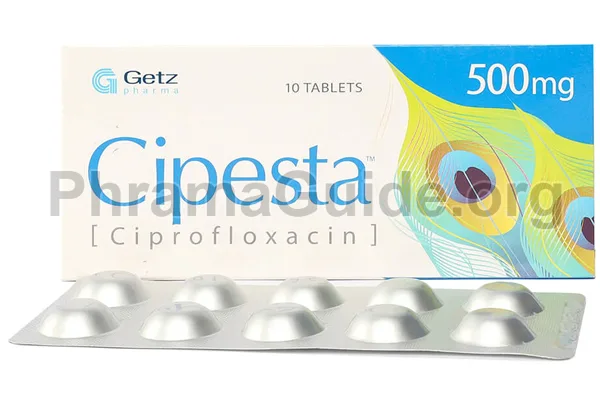Cipesta is an antibiotic medication that is used to treat a variety of bacterial infections. Like all medications, Cipesta can cause side effects, some of which are common and others less common.
Common Side Effects of Cipesta
- Nausea
- Diarrhea
- Vomiting
- Stomach pain
- Headache
- Dizziness
- RashInsomnia (difficulty sleeping)
- Changes in taste
Less Common, but More Serious Side Effects
- Tendonitis or tendon rupture: Tendonitis or tendon rupture, particularly in the achilles tendon (more common in older adults, those taking corticosteroids, or with a history of tendon problems)
- Central nervous system (CNS): Central nervous system (CNS) effects like confusion, hallucinations, and nervousness
Peripheral neuropathy (nerve damage) can cause numbness, tingling, or pain in the limbs. - Hypersensitivity: Hypersensitivity reactions, including severe skin rashes, swelling of the face or throat, and difficulty breathing (seek immediate medical attention if these symptoms occur)
- Prolonged QT interval on an electrocardiogram (ECG): Prolonged QT interval on an electrocardiogram (ECG), which can lead to an irregular heartbeat
Increased risk of Clostridium difficile-associated diarrhea, which can be severe and life-threatening

What is Cipesta?
Cipesta is one of the leading brands of Ciprofloxacin, manufactured and marketed by Getz Pharmaceuticals (Pvt) Ltd, Pakistan.
Cipesta : Available Formulations and Strengths
Presently, Cipesta is available in Tablets, Suspensions, and Injections Forms
Cipesta Tablets : 250mg, and 500mg strengths
Cipesta-XR Tablets : 500mg, and 1000mg (1gm) strengths
Cipesta Suspensions : 125mg, and 250mg strengths
Cipesta Injections (IV Vial) : 200mg, and 400mg strengths
What Are The Possible Drug Interactions of Cipesta?
- Antacids, calcium, and magnesium-containing products: These can reduce the absorption of Cipesta when taken together. It’s recommended to take Cipesta at least 2 hours before or 6 hours after taking antacids or calcium/magnesium supplements.
- Iron supplements: Cipesta can also bind to iron supplements, reducing its absorption. Try to take these supplements at least 2 hours before or 6 hours after Cipesta.
- Nonsteroidal anti-inflammatory drugs (NSAIDs): Combining Cipesta with NSAIDs like ibuprofen or naproxen can increase the risk of CNS (central nervous system) side effects, such as dizziness or confusion.
- Warfarin and other anticoagulants: Cipesta can enhance the effects of blood thinners like warfarin, increasing the risk of bleeding. Frequent monitoring of your clotting time is essential if you are on both medications.
- Theophylline: Concurrent use of Cipesta and theophylline, a medication used to treat respiratory conditions like asthma, can lead to increased theophylline levels in the blood, potentially causing toxic effects. Dose adjustments may be necessary.
- Tizanidine: Combining Cipesta with tizanidine, a muscle relaxant, can result in a significant lowering of blood pressure, potentially leading to dizziness or fainting.
- Glyburide (glibenclamide) and other oral diabetes medications: Cipesta can alter blood sugar levels, and combining it with diabetes medications may require dosage adjustments.
- Methotrexate: Cipesta may increase the levels of methotrexate in the body, potentially leading to methotrexate toxicity.
- Certain heart rhythm medications: Cipesta can prolong the QT interval on an electrocardiogram (ECG), and combining it with other drugs that do the same can increase the risk of irregular heart rhythms.
- Corticosteroids: Concurrent use of Cipesta with corticosteroids may increase the risk of tendon problems, including tendonitis and tendon rupture.

Leave A Comment